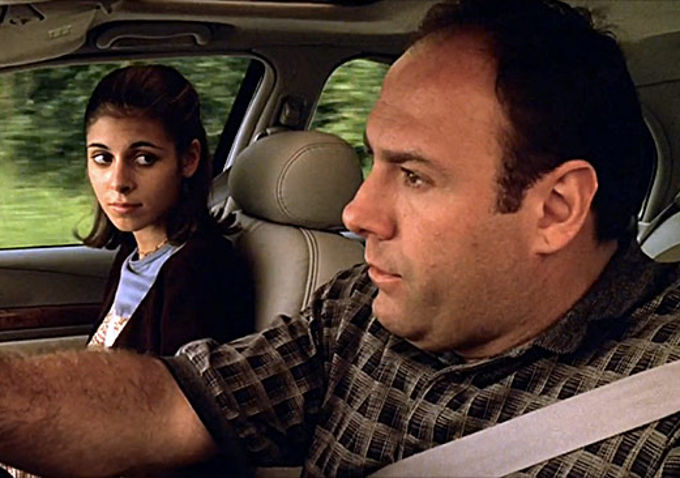By providing your information, you agree to our Terms of Use and our Privacy Policy. We use vendors that may also process your information to help provide our services. This site is protected by reCAPTCHA Enterprise and the Google Privacy Policy and Terms of Service apply.
3 Reasons Why David Chase Is Right About Not Answering the Big ‘Sopranos’ Question

Some debates, in TV land, never die. Mostly because we keep resurrecting them. This week’s example: The eternal question of what the ending of “The Sopranos” really means. Very specifically, does the dramatic cut to black at the end signify that Tony Soprano is dead at the end of the series?
Vox writer Martha P. Nochimson reported yesterday that creator David Chase had told her the answer and that the answer was “no.” Nochimson’s piece is much bigger than that one word, and is a smart look at Chase’s career and what that ending means in the context of his work. Of course, it’s the “No” that garnered all the attention of the Internet, which rushed to discuss the matter to the point where Chase’s representative actually released the following statement at the end of the day:
As David Chase has said numerous times on the record, “Whether Tony Soprano is alive or dead is not the point.” To continue to search for this answer is fruitless. The final scene of ‘The Sopranos’ raises a spiritual question that has no right or wrong answer.
In short, David Chase would like us to chill out a little and think bigger than yes or no. And here are three reasons why he’s right.
Tony’s not dead because you don’t see him die
The “Sopranos” ending stands out in part because it was something that had never been done before, which technically could be seen as a bit of a cheat. But if Tony Soprano is Schrodinger’s Mobster, then that’s because he’s supposed to be.
In making that allusion, it’s vital to recall the actual genesis of the Schrodinger’s Cat theory, which is a deliberately absurd reinterpretation of the notion in quantum mechanics that it’s possible for an object to exist in two different states simultaneously. Schrodinger’s point, in coming up with the cat theory, was to say that it’s pretty silly to imagine a cat that’s both alive and dead until someone peeks inside the box.
And so Tony Soprano’s final moments on screen show him alive, with his family, waiting for his daughter, Journey playing overhead. The blunt truth of the matter is that Tony Soprano is alive because he doesn’t die on screen. What happens after that cut is what happens after anyone leaves our lives — whether they die five seconds or fifty years later, it doesn’t change their actual existence.
It reveals how we can’t accept the possibility of ambiguity.
After Chase released his statement, Vox culture editor Todd VanDerWerff wrote in a response piece that:
The entire point of Nochimson’s essay is that even though Chase answered her query about Tony’s death, it doesn’t matter. If the fictional character of Tony Soprano lives or dies is not the point, because ‘The Sopranos’ itself is no more. Somewhere, the characters live on, even if Tony is not among their number. But we don’t get to see what they’re up to.
Freaking out about the ending, treating each frame like the Zapruder film, ultimately undercuts the brilliant audacity of it. It’s an ending for the ages, one that cemented the show’s place as one of the greatest series of all time. By wondering what happens next, the final moment isn’t fully appreciated. It completely destroys the bigger picture Chase spent six seasons painting.

Freaking out about the ending means overlooking what actually made “The Sopranos” great
There were many great “Sopranos” over the course of its run, but the one that always stands out for me most distinctly is “College,” the first season episode where Tony takes Meadow to visit colleges. It was the episode that highlighted a major part of what this show was meant to be: A man struggling with the balance between his family and his work, just on a heightened scale.
“The Sopranos” wasn’t a show about Tony being brought to justice for his many, many terrible acts — a show about the end result of a life of crime. It was about a man trying to cover up his hands, raw from garroting a target, from his teenage daughter.
“Sopranos” was always a show unafraid of the ambiguity and vagueness that comes with the basic day-to-day of living. And that’s perfectly captured by its final scene. Every moment of that last scene that had viewers freaking out — every time the door opens, potentially ushering in death — is dramatic because of context, because of the knowledge that these are our last moments with the Soprano clan. The fact those last moments prove to be ordinary is what makes them so special, and ensures that we’ll still be talking about it for years to come.
The key is talking, not deciding — because in matters of life and death, the answer is so rarely yes or no.
By providing your information, you agree to our Terms of Use and our Privacy Policy. We use vendors that may also process your information to help provide our services. This site is protected by reCAPTCHA Enterprise and the Google Privacy Policy and Terms of Service apply.


















